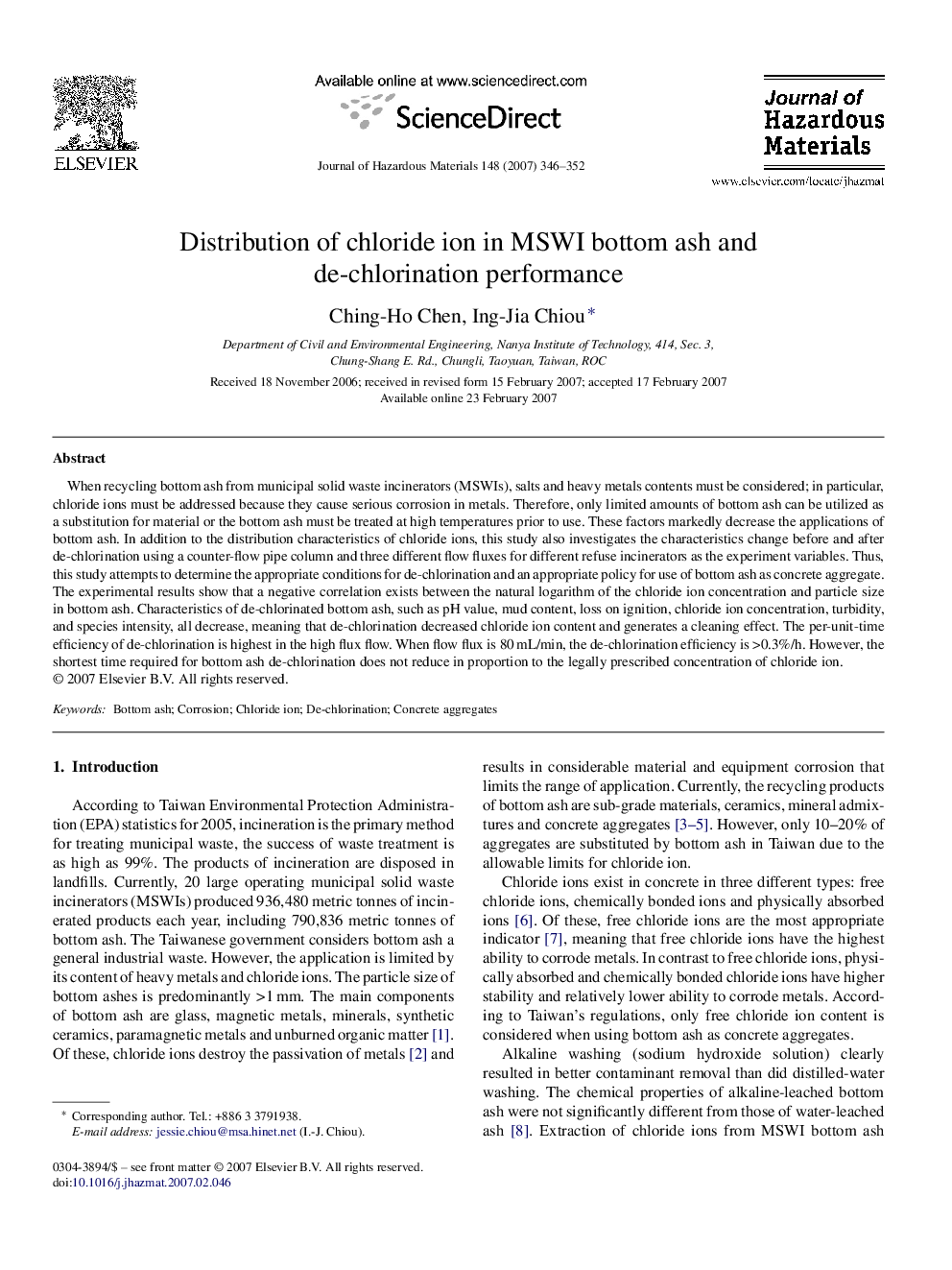| Article ID | Journal | Published Year | Pages | File Type |
|---|---|---|---|---|
| 584413 | Journal of Hazardous Materials | 2007 | 7 Pages |
Abstract
When recycling bottom ash from municipal solid waste incinerators (MSWIs), salts and heavy metals contents must be considered; in particular, chloride ions must be addressed because they cause serious corrosion in metals. Therefore, only limited amounts of bottom ash can be utilized as a substitution for material or the bottom ash must be treated at high temperatures prior to use. These factors markedly decrease the applications of bottom ash. In addition to the distribution characteristics of chloride ions, this study also investigates the characteristics change before and after de-chlorination using a counter-flow pipe column and three different flow fluxes for different refuse incinerators as the experiment variables. Thus, this study attempts to determine the appropriate conditions for de-chlorination and an appropriate policy for use of bottom ash as concrete aggregate. The experimental results show that a negative correlation exists between the natural logarithm of the chloride ion concentration and particle size in bottom ash. Characteristics of de-chlorinated bottom ash, such as pH value, mud content, loss on ignition, chloride ion concentration, turbidity, and species intensity, all decrease, meaning that de-chlorination decreased chloride ion content and generates a cleaning effect. The per-unit-time efficiency of de-chlorination is highest in the high flux flow. When flow flux is 80Â mL/min, the de-chlorination efficiency is >0.3%/h. However, the shortest time required for bottom ash de-chlorination does not reduce in proportion to the legally prescribed concentration of chloride ion.
Keywords
Related Topics
Physical Sciences and Engineering
Chemical Engineering
Chemical Health and Safety
Authors
Ching-Ho Chen, Ing-Jia Chiou,
